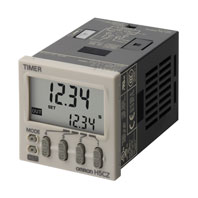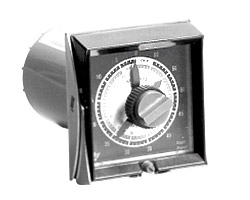Timers and Counters

As I work on editing the Automation Primer I am constantly adding and revising sections based on web searches or old recalled experiences. When I got to the Timer section of the book I remembered working for Stephenson Controls in the early 1990s. They were founded as a distributor and integrator of Eagle Signal control Products in the late 1960s by John Stephenson, a former Allen-Bradley employee. Not many people remember this, but Eagle Signal along with Modicon and Allen-Bradley was one of the early players in the PLC market with the Eptak and Micro 190 PLCs. They also made one of the most widely used electromechanical timers which are still in use today. One of the fun things about Stephenson was the timer rebuild bench where repairs and rebuilds of these timers took place. This could be a welcome respite from the sales and integration parts of the job.
From the Primer: 3.4.5 Timers and Counters
A timer reacts to an applied signal or power feed and switches a set of contacts based on a delay. It may also create a repetitive series of pulses. Timers may be purely mechanical such as with a pneumatic timer, electromechanical with a motor and clutch or entirely electronic. They are available in both analog and digital formats.
Timers generally fall into the following categories:
• On Delay – Timer changes state after a specified period of time and remains in that state until the signal is removed.
• Off Delay – Timer changes state immediately and reverts to its original state after a specified period of time.
• One Shot – Timer creates a single pulse of specified length
• Pulse or Repeat Cycle – Timer creates a series of on and off pulses with configurable on and off times until signal is removed.
As with temperature controllers, timers and counters are often sized using the DIN system ensuring that they will fit a certain sized panel cutout. They are usually available in 1/16 DIN, 1/8 DIN or ¼ DIN sizes.

Electromechanical timers such as the Eagle Signal Cycle Flex timer are often used in applications where electronic timers may not be appropriate. Mechanically switched contacts may still be less expensive than the semiconductor devices needed to control powerful lights, motors and heaters. An electromechanical cam timer uses a small synchronous AC motor turning a cam against a comb of switch contacts. The AC motor is turned at an accurate rate by the alternating current, which power companies carefully regulate. Gears drive a shaft at the desired rate, and turn the cam. These timers are still in use in many industrial facilities because they are easily rebuilt, rugged and switch high current loads, however they are often replaced with less expensive and more reliable electronic timers.
The most common application of electromechanical timers now is in washers, driers and dishwashers. This type of timer often has a friction clutch between the gear train and the cam, so that the cam can be turned to reset the time. This is a less expensive method of performing multiple timing segments with high current load switching than with an electronic version.
A counter also reacts to input signals, totalizing them and changing state of a signal when the specified count has been reached. Counters are generally classified as up counters, where state changes increment the value until the setpoint is reached, or down counters where the counter starts at the setpoint and counts down to zero. Counters may also be combinational with both up and down signals. Counters also have a reset input to set the counter back to its starting point. They may be mechanical in nature such as with a totalizer or be incremented electronically.
